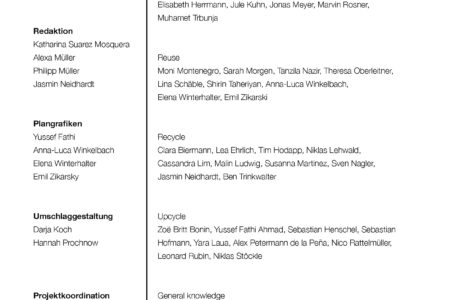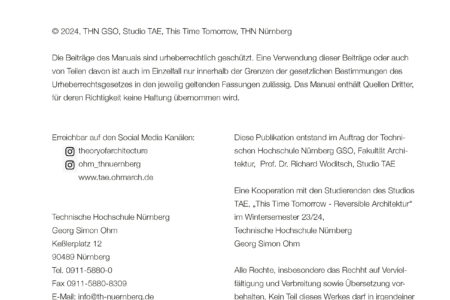Manual of Materials
Time: Wintersemester 2023/24
Lecturer: Prof. Dr. Richard Woditsch, Jonas Urbasik, Patrick Kurzendorfer, Michael Feil
Semester: Bachelor 5 + Bachelor Thesis
Foreword
“Sustainable development is development that meets the needs of the present without compromising the ability of future generations to meet their own needs” [World Commission on Environment and Development, 1987]. This concept introduced the utilization of natural resources as early as 1987 in the Brundtland Report. The publication of the Brundtland Report is considered the beginning of the global discourse on sustainability and sustainable development. Since then, the term sustainability has become popular, yet it is often trivialized in daily life.
The requirements for sustainable construction include energy efficiency and climate neutrality, preservation of biodiversity, conservation of resources, use of renewable materials, reduction of land use, and sustainable procurement of products [Bundesrepublik Deutschland, 2023]. The choice of materials is crucial for sustainable architecture. In today’s globalized world, building materials often travel long distances from their source, producing a significant amount of CO2 emissions, which is why the regional use of materials should be preferred.
The production of materials generates emissions, and each building material possesses a certain amount of embodied energy. This is why upcycling, recycling, and composting of materials are crucial for sustainable architecture. Additionally, more than 53 percent of the annual waste in Germany consists of construction debris, including waste generated during construction and demolition. Furthermore, the construction industry is responsible for over one-third of global greenhouse gas emissions, generated during both construction and the subsequent operation of buildings [Jansen, 2022].
Exploring and experimenting with new, sustainable, and circular materials is therefore an essential part of the development of existing, future, and circular buildings. “In the context of circular construction, stakeholders in the construction and real estate industries are engaged in the preservation, enhancement, and activation of existing building stock, considering it as a valuable source and repository of materials” [Kreißig, n.d.].

